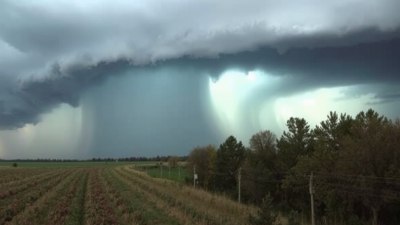How the Tilt of Earth Creates Seasons and Global Weather Patterns
Explore how Earth's axial tilt influences seasonal changes and global weather systems.

The tilt of the Earth is a foundational aspect of our planet's relationship with the Sun, playing a critical role in creating the distinct seasons we experience. This axial tilt, measured at approximately 23.5 degrees, significantly impacts the distribution of sunlight across the globe, leading to variations in temperature, daylight hours, and consequently, the changing seasons. Understanding this intricate relationship helps us appreciate not only the cycles of nature but also the complex global weather patterns that arise as a result.
The Science Behind Earth's Tilt
The axial tilt of the Earth, also known as obliquity, is the angle between Earth's rotational axis and its orbital plane around the Sun. This tilt is not static; it fluctuates slightly over long periods due to gravitational interactions with other celestial bodies. The current tilt has been relatively stable but has varied between about 22.1 and 24.5 degrees over a cycle lasting approximately 41,000 years. The consequences of this tilt are profound and extend beyond simple temperature changes.
How Seasons Change
As the Earth orbits the Sun over the course of a year, different parts of the planet receive varying amounts of sunlight due to the tilt. During summer in the Northern Hemisphere, the North Pole is tilted towards the Sun, resulting in longer days, shorter nights, and more direct sunlight. In contrast, during winter, the North Pole is tilted away from the Sun, leading to shorter days, longer nights, and slanting sunlight, which provides less warmth. Conversely, when it's summer in the Southern Hemisphere, the conditions are reversed.
The Equinoxes and Solstices
Two crucial astronomical events help mark the seasons: the equinoxes and solstices. The vernal equinox, occurring around March 21, marks the beginning of spring in the Northern Hemisphere when day and night are approximately equal. The summer solstice, around June 21, signifies the start of summer, characterized by the longest day and shortest night. Similarly, the autumnal equinox around September 23 heralds the onset of autumn, while the winter solstice around December 21 indicates the start of winter, with the shortest day and longest night. Thus, the Earth's axial tilt creates a rhythmic pattern of seasons, each with its own characteristics and climate.
Impact on Global Weather Patterns
Beyond seasonal changes, Earth's tilt also affects global weather patterns. The differential heating of the Earth's surfaces leads to the establishment of atmospheric circulation cells, which significantly influence weather. For instance, during the summer months in the Northern Hemisphere, the land heats up more quickly than the oceans, causing a shift in air pressure and leading to various weather phenomena such as thunderstorms and monsoons. Conversely, winter often brings stable high-pressure systems and cold fronts that can lead to snowstorms in some regions.
Ocean Currents and Climate
Ocean currents, driven by wind patterns, temperature, and salinity differences, also play a crucial role in weather systems and climate. The tilt of the Earth impacts the distribution of sunlight absorbed by ocean waters, which in turn influences currents. For example, the Gulf Stream, which carries warm water from the Gulf of Mexico to the North Atlantic, significantly affects the climate of Western Europe, keeping it milder than other regions at similar latitudes. The relationship between ocean currents and seasonal changes highlights the interconnectedness of Earth's systems.
Variations in Climate Zones
The tilt of the Earth has given rise to distinct climate zones along with the corresponding flora and fauna. For example, tropical regions near the equator enjoy consistent daylight and warmer temperatures throughout the year, while temperate zones experience distinct seasons with a notable variance in temperature and precipitation. Polar zones, which are more significantly impacted by the axial tilt, experience extreme seasonal variations with long, dark winters and bright summers.
El Niño and La Niña Phenomena
A notable consequence of Earth's climatic system, influenced by the axial tilt and prevailing winds, is the El Niño-Southern Oscillation (ENSO). This climatic pattern is characterized by irregular fluctuations in sea surface temperatures and pressures in the Pacific Ocean, leading to significant weather changes globally. El Niño events typically result in warmer ocean waters, affecting precipitation patterns, while La Niña events are characterized by cooler ocean temperatures and can bring about drier conditions in several regions. Both phenomena showcase how variations in ocean temperatures and atmospheric conditions—anchored in the Earth's axial tilt—can lead to unprecedented weather patterns.
Human Influence and Climate Change
In recent times, human activities have introduced significant changes to the natural climate system. The burning of fossil fuels, deforestation, and industrial processes have led to increased greenhouse gas concentrations, altering weather patterns and exacerbating climatic events. While the axial tilt still governs fundamental seasonal changes, human-induced climate change is superimposed on these cycles, presenting challenges that must be addressed to mitigate impacts on ecosystems, weather, and societies worldwide.
In conclusion, the tilt of the Earth is a fundamental factor in the creation of seasons and global weather patterns. By influencing temperature, light, and atmospheric circulation, the axial tilt governs not only the rhythm of seasonal changes but also the complex interplay of climatic phenomena affecting our planet. Understanding this relationship is crucial as we navigate the challenges posed by climate change, ensuring a sustainable future for generations to come.











